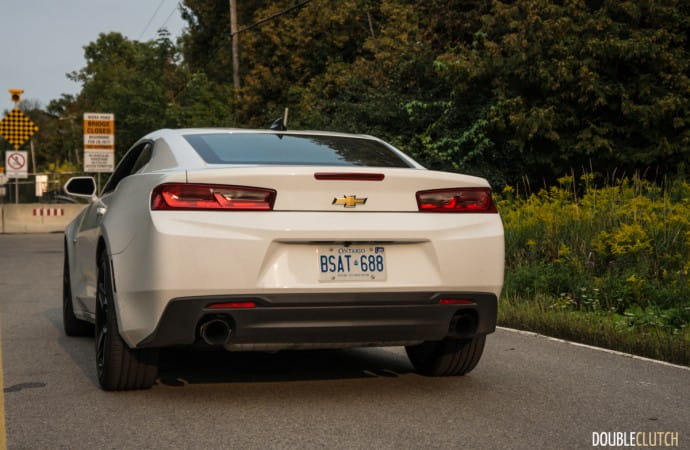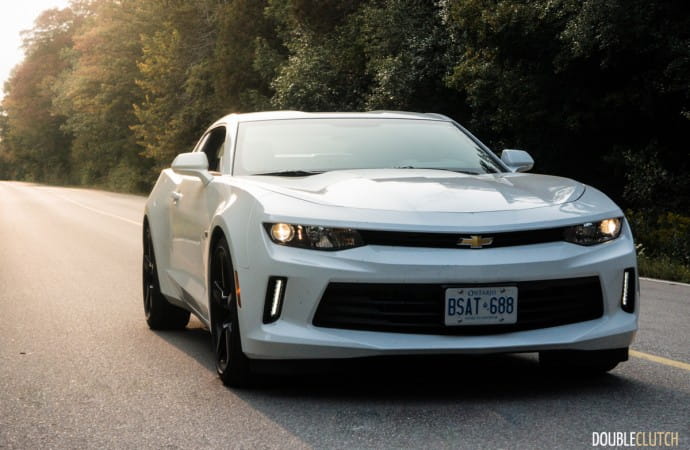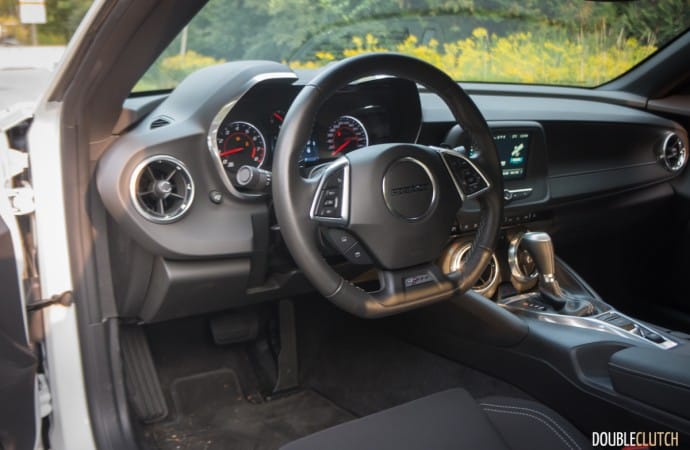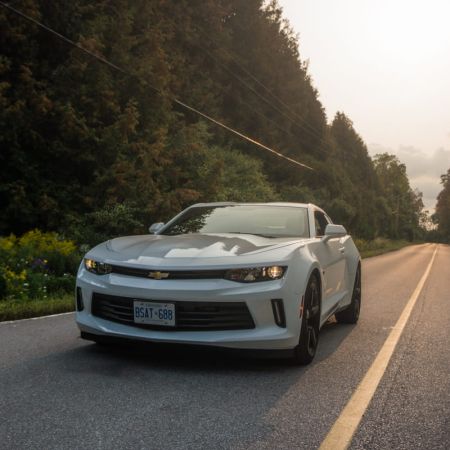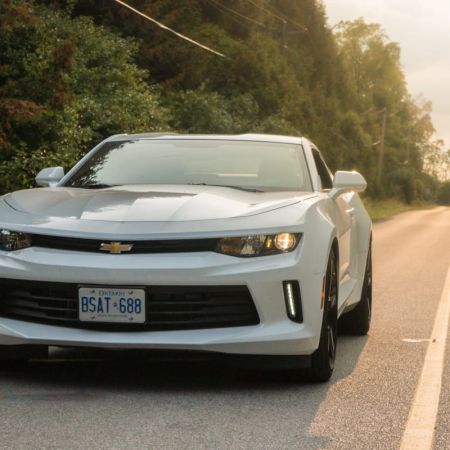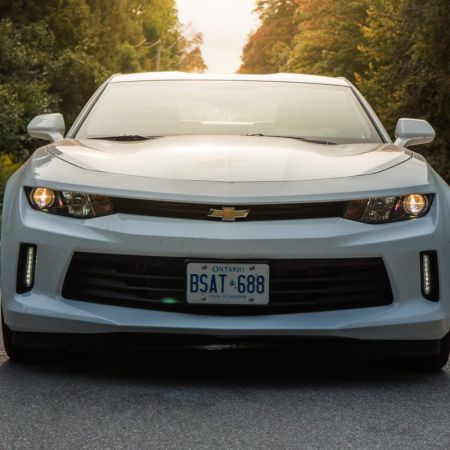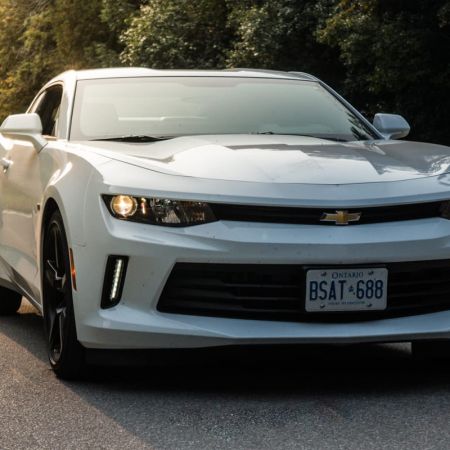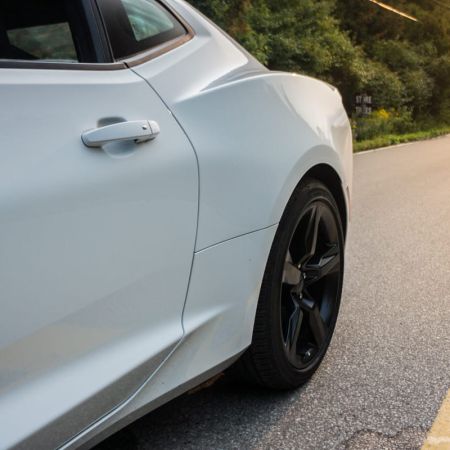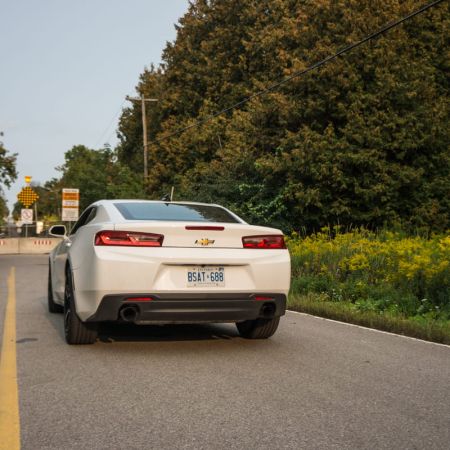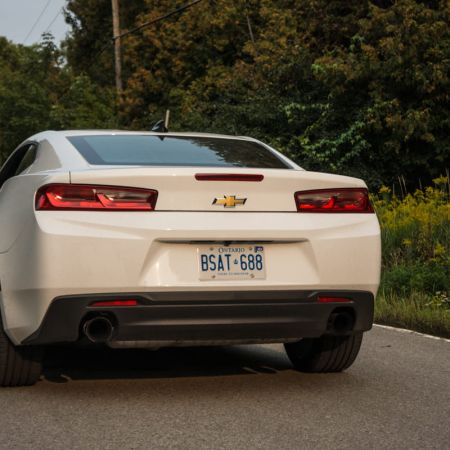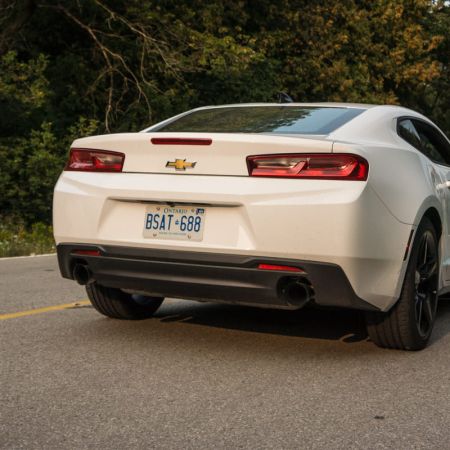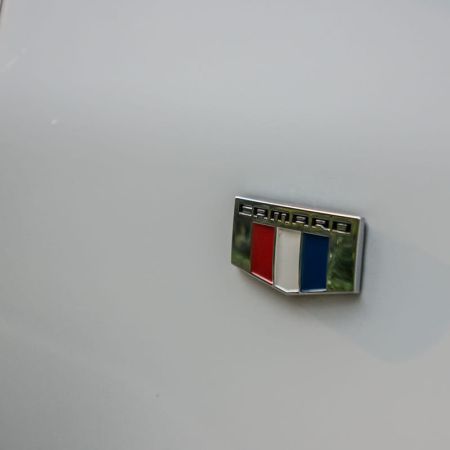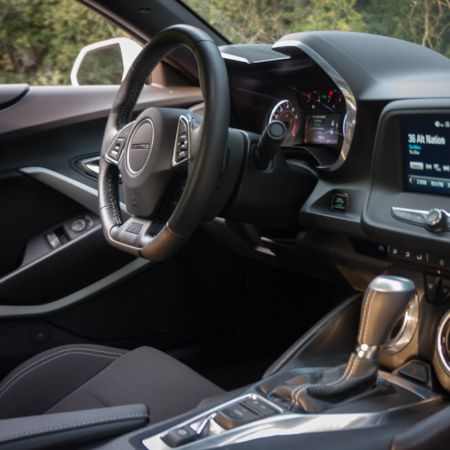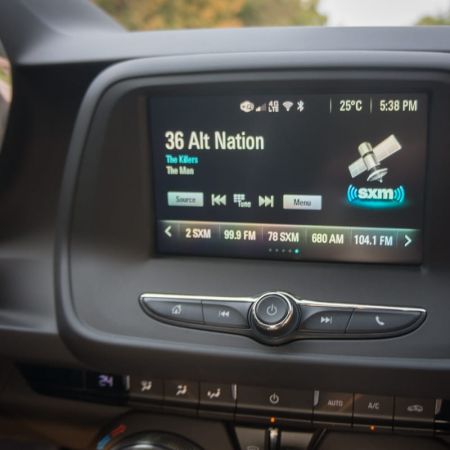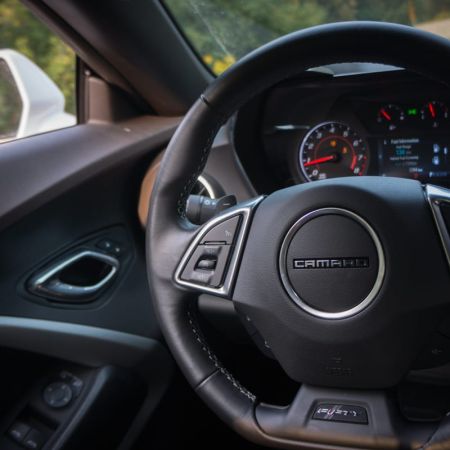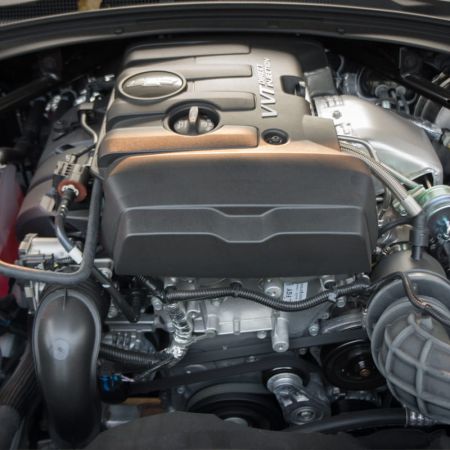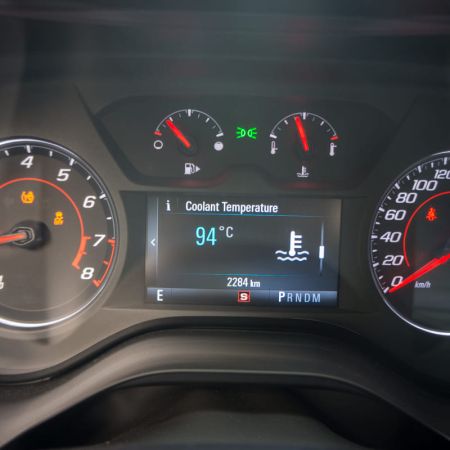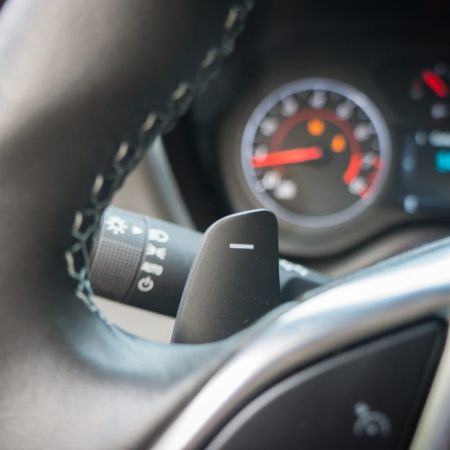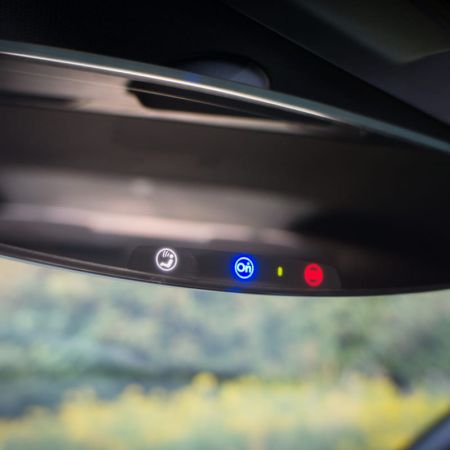Some things are not as they seem. Once, I ate a jelly bean that I thought was lime, and it turned out to be vomit-flavoured. That was a bad day. On another occasion, I filled a burrito with lots of delicious looking chunks of BBQ’d pork while vacationing in Mexico. Turns out it wasn’t pork, and I had filled the burrito with sauteed Poblano peppers. That was bad the following morning. On the flipside, occasionally I get lucky enough to have a nice surprise. I recently had the 2018 Chevrolet Camaro LT Coupe in my driveway, and while it didn’t give me indigestion, it did impress me in a way I really didn’t see coming.
The 1LT model comes with a 2.0L turbocharged four-cylinder and an automatic transmission, so cue the pitchforks, garlic, and angry mobs. While a typical American V8 enthusiast would have something to say about this, you might be relieved to know, I’m not a typical American V8 enthusiast. In fact, generally I’m more interested in European precision. This largely because I’m a track-day enthusiast, and I find that occasionally, I tend to take a car around a corner. Historically, big American cars have never been stellar at that whole “turning” thing. I fully expected this Camaro to be a big lump as well, even though it has been redesigned. I was pleasantly surprised to be proven completely wrong.
The new chassis, sourced from the Cadillac ATS (reviewed here) is rather excellent. Like, it’s very, very impressive. I’ve never been in a vehicle that can hide its size so well. In fact you probably will forget that what you are driving until you go to park it; at which point you will remember that you are in a large coupe with visibility issues. Before I moan and complain about the ergonomics I want to talk about the chassis and handling. I was pleasantly surprised to find a small diameter flat-bottomed steering wheel, fast steering ratio, and excellent weight balance. The chassis is noticeably stiff and the weight feels very inboard of the front axle. All this adds up to a car that turns in with little protest, changes direction very quickly, and reacts to steering inputs at the limit.
The 1LT seems to understeer slightly on a balanced throttle through the corner, but will limit oversteer with too much steering lock or with a lot of throttle. In fact, my first thought wasn’t whether or not it was a rival for a Mustang or a Challenger (reviewed here), but instead it felt like a rival for the Subaru BRZ or Toyota 86 (reviewed here). When you consider that this is a rear-wheel-drive coupe that costs $31,245, you’ll conclude that it is a rival for the BRZ or 86. Yes, those feel more connected to the road, but the Camaro feels close enough that I would would seriously recommend people test drive one before settling on a BRZ.
The other kicker is that for the price of a BRZ, instead of getting a 200-ish horsepower naturally-aspirated four-cylinder, you get a turbocharged four, making 275 horsepower and 295 lb-ft. of torque. In case your math isn’t the best, that’s more than a BRZ. Nearly twice as much torque actually. The Camaro pulls hard even in fourth gear and will hustle off the line even with the eight-speed automatic it’s attached to. I found turbo lag to be very minimal, and the engine was responsive. The automatic transmission delivered fast shifts, and would readily downshift to deliver the torque with a flick of the right foot. If you drive aggressively enough it will automatically change to a more angry shift map, and will blip the throttle for you on downshifts. There are paddle shifters, but they were laggy and took away from the driving experience, so you are better off leaving it in automatic mode. The drivetrain is very good, and actually quite efficient. Sadly, it’s severely lacking in the sound department.
The downside to a torquey turbo Camaro is that it really doesn’t produce anything close to a good sound. The induction and exhaust noise is nothing short of annoying. It seems to whine at high RPMs and sounds weak in low RPMs. For only $1645 you can get a V6 fitted to your Camaro, which actually sounds epic, especially with the performance exhaust. It doesn’t deliver as much torque (more horsepower) but will satisfy the angry driver in you. That being said, I’m very intrigued by the prospect of a small-displacement turbocharged Camaro. Whether we like it or not, that’s the future. The big V8s simply aren’t going to last in high volume cars, at least without some huge environmental tax on them. The catch is that manufactuerers are going to have to find a way to make these four-cylinders sound better. Some inline-fours sound great, but this isn’t one of them. I think that we could fix the problem if GM would allow the Camaro to embrace its turbocharger, instead of hiding it. Allow some some spooling and blow-off sounds; why not?
So the drivetrain and the chassis really impressed me. The ergonomics, not so much. As I mentioned earlier, the visibility is poor. I was personally ok with it, because I happen to spend a lot of time in hunkered down, loud, low visibility track cars. The average consumer is going to have a hard time. If it didn’t have a back-up camera, I would have had to hire a man to follow me around with lit-up, airport runway batons. The rest of the interior, is likewise not very user friendly. There isn’t a lot of space or or headroom, and the armrest opening has to have one of the most baffling designs I’ve ever seen. The plastic on the steering wheel squeaks when you push the buttons, and the infotainment is angled downward for some reason. At least it has a 4G-LTE Wifi hotspot though, something none of the Camaro’s competitors offer!
The redeeming feature of the interior, is the screen-central gauge cluster. It doesn’t look particularly amazing, but it actually includes vital information for track use. For some reason, certain manufacturers are hesitant to allow you access to this info, and I don’t see why. The Camaro has a nice clear readout of oil, coolant, and transmission temperature, battery voltage, etc. Peculiarly it doesn’t have a boost gauge. These bits of information are actually important if you want to track your car.
On the exterior of the Camaro, my complaining ceased. My tester was finished in an excellent white, and even though some don’t agree with me, I think these new Camaros look awesome. They are balanced visually, and the headlights and taillights look angry and aggressive. It does look rather big and imposing, and the upside to the poor visibility is that the windshield and side windows don’t look big. They are narrow and sleek, and the whole exterior is better for it. My tester rode on black 20” wheels and fairly wide rubber. The stock fender gap is very minimal, and you won’t be left wishing you had some extra dollars for lowering springs.
I found the 2018 Chevrolet Camaro LT Coupe fun, and very impressively competent as a performance car. I think that this 1LT with some better tires and a bit of tuning would make a very formidable and fun track car. The chassis was so impressive for how big the car looks from the outside, and it felt light and balanced. For $30,000, if you are looking for an affordable high performance, no-nonsense sports car, this should without a doubt be on your short list.

